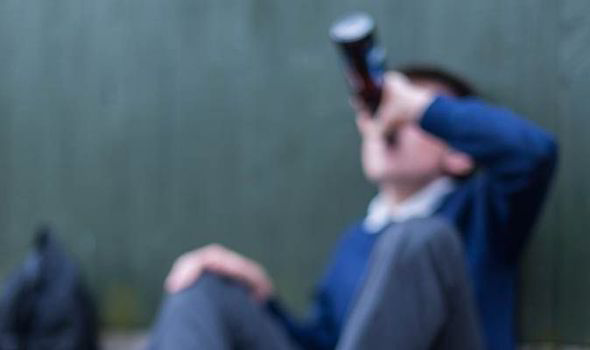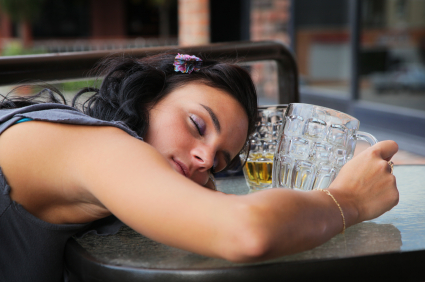Addicted young people need more, not less help from their School
Contents:
Challenging addiction at school

- Trespass and Chicken - an allergic rush
- Smoking - less of a problem
- Ethanol and Chemistry
- Self-harm and cutting weight
- Behave like a Porn Model
- What do we do?
- The Children Act
- Parent Interaction
- Bad Corporate Pressure
Challenging Addiction at School
It is common and often quite normal for teenagers to engage in some risky behaviour. However, for some other teenagers the behaviour can be seen to be compulsive, it becomes something that they continue to repeat even after they have been challenged, and even after they have acknowledged themselves that a repeat of that behaviour is likely to hurt them and probably others too. So, for some of my students, despite remorse for the last occasion and being fully aware of the consequences, they do it again.
... don't do it again
Trespass and Chicken - an allergic rush?
Immediate examples of risky behaviours that come to mind include minor shoplifting, trespassing on roofs or railway lines or engaging in ‘chicken’ with traffic. Most people grow out of this kind of behaviour, but some don’t and this can present us with real problems. In my experience, other examples include; dangerous behaviour when driving (jumping from car to car) or racing on busy roads. This activity seems attractive for some 17-year-old boys, and those ones who do it ‘compulsively’ speak freely about getting a ‘rush’ from it. Whether this is addictive behaviour or not, is not my position to say.
Smoking - still smoulders
The other common habits which do become addictions amongst secondary age students include smoking. However, interestingly this is not as popular as it was even ten years ago, in my experience. Boys tend to smoke to show off and appear ‘hard’, while girls say it keeps them slim and attractive. A small proportion become addicted to nicotine and develop a smoking habit for life. They will pursue their addiction even when it gets them into trouble at school and at home.
Ethanol and Chemistry
On the other hand, increasingly large proportions of students experiment with alcohol; many will binge drink and while some learn from the experience and are deterred from doing it again, a significant number of students will binge drink regularly. In my view, alcohol abuse amongst young people is far more problematic for them and their families than all other forms of addictive or compulsive behaviour put together. Violence and sexual misconduct are also commonly associated with this group of students.
Illegal drug addiction is relatively rare amongst school-aged students, in my experience. Lots of young people experiment, but only a smaller proportion of students go on to become regular users or become addicted.
Self-harm and Cutting Weight
Self-harm, may or may not be a form of addiction, but it is certainly a compulsive and extremely damaging behaviour. While not too common in school, self-harming is a highly distressing feature of many young people’s lives. Similarly, eating disorders are all too frequent, usually amongst the girls. It seems to me that some of this must be the result of the constant pressure on children from the media to have to conform to culturally-approved stereotypes - such as size zero models.
Behave like a Porn Model
A new form of addiction is currently causing us great concern in school, and that is addiction to online pornography. Interest in pornography is nothing new especially amongst boys, but we are seeing increasing numbers of girls who are distressed at their porn addiction. They want to stop it but seemingly cannot. The ease of access to any material is clearly a contributory factor. Worryingly, many boys and girls are emulating the behaviour they see online, with girls seeking to please boys by behaving like porn stars and boys believing that the behaviour they see online is normal in a relationship.
So what do we do?
In dealing with addictive behaviour we do the following:
- We aim to provide all our young people with a clear set of values and well-defined boundaries within which they can learn and develop well. We have a daily whole-school assembly where we reinforce the school’s values to the whole school community. We reinforce our values through a fair, firm and consistent behaviour management system. The majority of our students thrive within this context
- We talk a lot about the value of every student and their right to be treated with dignity and respect. In my experience it is those young people whose self-esteem is low who are vulnerable to addictive behaviour
- Representatives from organisations such as Addaction and Alcoholics Anonymous visit the school regularly and take part in lessons and other activities
- We employ a School Counsellor to whom students may self-refer or who may be referred by staff. The Counsellor will work confidentially with students over a number of weeks, liaising where appropriate with outside agencies and organisations like CAMHS
- Pastoral staff at the school liaise as appropriate with parents and families, GPs and external agencies
The Children Act
In terms of the guidelines we follow, we are bound by The Children Act (1989) and it’s overarching principle: ‘The welfare of the child is paramount’. Beyond that, we seek the active support of specialist agencies, GPs and other relevant organisations whenever we identify an addiction-related problem: we are well aware that we are not qualified to deal with the complexity of addiction as we are teachers, not medical professionals. However, sometimes we have to do the parenting for children from dysfunctional families when the child turns to addictive behaviour to deal with their pain and loss as a result of neglect or abuse.
Addiction is an Illness
My own philosophy encompasses the belief that every child deserves the best care and support we can possibly provide; addiction is an illness, not a lifestyle choice. Some children in our care have to carry enormous burdens through no fault of their own. They are sometimes demonised by society and, where there are mental health issues, abandoned to their own devices as a result of a lack of adequate resourcing of mental health services for young people.
Who to Trust?
Sometimes the only trustworthy constant in their life is the school and their teachers. As discussed, the presence of dangers and threats are growing all the time. In my view, online pornography is a massive social and cultural issue and especially for the most vulnerable young people a relatively new and highly damaging addiction. Similarly, the persistent pressure of our celebrity-obsessed culture, expressed through the media places enormous pressure upon young people to conform to cultural expectations (stick-thin, photo-shopped models, for example). These types of images do untold damage to students with low self-esteem.
Schools can only do so much. We are under ever-increasing pressure to simply become exam-factories. The accountability framework within which we have to operate puts pressure on schools and actively marginalises those students with the most need for care, especially as these are the ones who often find it hard to perform academically. At the same time our school budget is being slashed, so the time available for teachers to work with addicted students is simply disappearing.
I am convinced that we do a lot of preventative work by providing a stable, caring, calm and well-ordered environment for our students. However, for some students, the chaos at home remains which means that weekends; holidays and so on can be very difficult periods for them.
Parent Interaction
Work with parents can be very challenging, especially when the trigger of the addictive behaviour itself resides in relationships – or the lack of healthy relationships at home. Domestic violence, for example, and messy divorces or addictions amongst parents can create further distress amongst young people, which is fertile land for propagating compulsive and addictive behaviour. In these cases parents and families will be very defensive and will sometimes violently protect their privacy and lack of engagement.
Taking a Stance against Bad Corporate Pressure
Finally, in my view the two areas of addiction causing most damage to our young people are alcohol and online pornography. Both forms of behaviour are fuelled and encouraged by massive commercial interests; schools are amongst a very few organisations in society which try to stand against these interests and support young people. It will always be a losing battle but one which will also always be worth fighting.
For further authoritative information on How to treat sex addiction
The growth within a laboratory of microbes, organisms too small to be seen with the naked eye.
Full medical glossary
An element present in haemoglobin in the red cells.
Full medical glossary
Lack of attention or disregard; a condition in which one side of the body or visual field are neglected.
Full medical glossary
An addictive substance found in tobacco and nicotine replacement therapies.
Full medical glossary
A tube placed inside a tubular structure in the body, to keep it patent, that is, open.
Full medical glossary
Relating to injury or concern.
Full medical glossary


